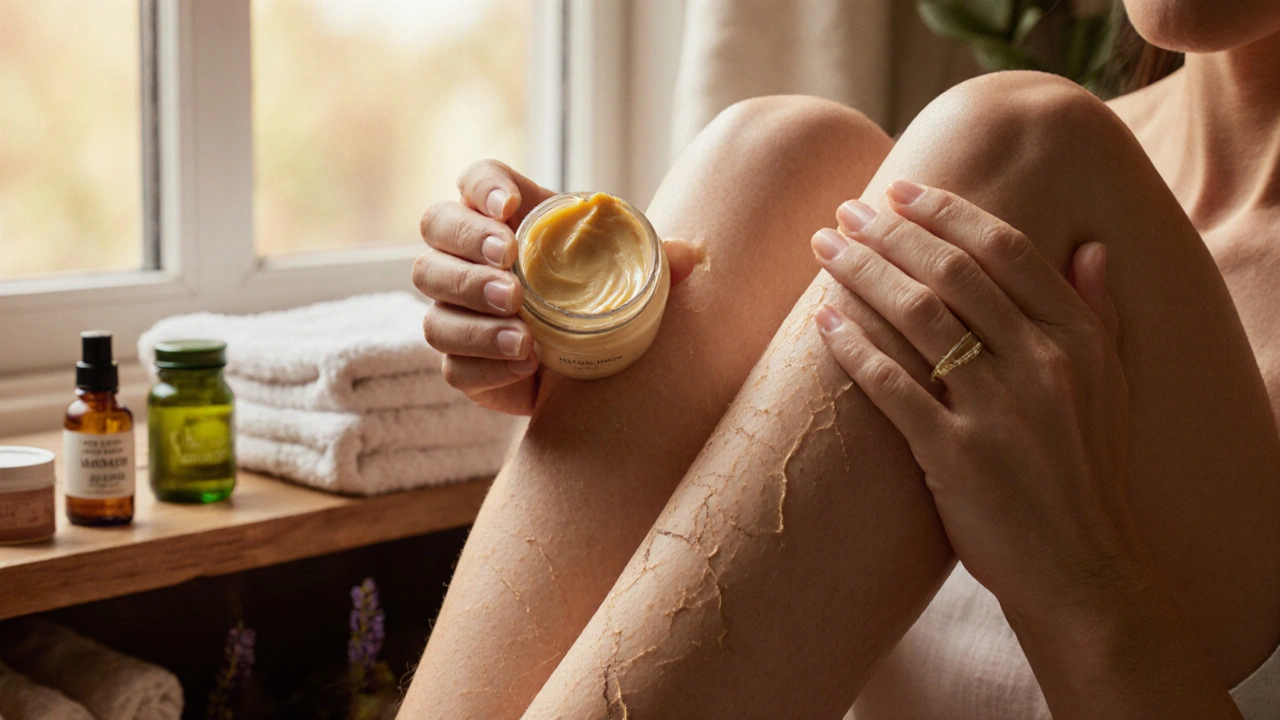Alternativy glycerinu: co použít místo glycerinu v péči o pleť
When you're looking for better hydration for your skin, glycerin, je běžně používaná hydratační látka, která váže vodu na povrchu kůže. Also known as propan-1,2,3-triol, it's found in almost every moisturizer—but what if your skin doesn't respond well? Many people find glycerin too sticky, or it doesn't help with dryness in low humidity. That's when you need real alternatives that actually penetrate and repair the skin barrier, not just sit on top.
One of the most powerful replacements is aloe vera, je přírodní gel, který nejen hydratuje, ale také uklidňuje záněty a podporuje obnovu pleti. It's especially good if your skin is sensitive, irritated, or reacting to synthetic ingredients. Studies show aloe vera improves skin elasticity and reduces transepidermal water loss better than some synthetic humectants. You can use pure aloe gel straight from the leaf—or pick a product with at least 90% aloe content. It's not just a trend; it's a proven, centuries-old remedy that works even when glycerin falls short.
Another top alternative is hyaluronová kyselina, je molekulárně menší než glycerin a schopná vázat až 1000krát více vody než její vlastní hmotnost. Unlike glycerin, which works mostly on the surface, hyaluronic acid pulls moisture deep into the dermis, plumping skin from within. It’s ideal for dry, aging, or dehydrated skin and pairs perfectly with ceramides and niacinamide. You won’t find it in cheap drugstore creams, but it’s worth seeking out in serums or targeted treatments. And yes—it’s completely safe for daily use, even on acne-prone skin.
Don’t overlook squalan, je přírodní olej, který tělo samo vyrábí, ale jeho produkce klesá s věkem. Squalane mimics your skin’s natural sebum, so it doesn’t clog pores and restores the lipid barrier faster than glycerin. It’s lightweight, odorless, and works wonders for combination or oily skin that still feels tight after moisturizing. Many people who thought they had "dry skin" were actually dealing with a damaged barrier—and squalane fixes that.
And then there’s ceramidy, jsou tuky, které tvoří základní strukturu kůže a drží všechny hydratační látky na místě. Without ceramides, even the best humectants like glycerin or hyaluronic acid can’t do their job. If your skin flakes, stings, or gets red easily, you likely lack ceramides. Look for products that combine them with fatty acids and cholesterol—this trio is the gold standard for barrier repair. It’s not glamorous, but it’s the only thing that truly fixes chronic dryness.
You might also notice that many of the posts below focus on natural remedies—like aloe vera gel, fermented ingredients, or plant oils. That’s not random. People are moving away from single-ingredient solutions and toward holistic, barrier-supporting routines. Glycerin isn’t bad, but it’s just one piece. Real skin health comes from combining the right hydrators with the right repair agents. The posts here cover exactly that: what works, what doesn’t, and what you can actually find in Czech drugstores without paying premium prices.
Čím se dá nahradit glycerin v tělové kosmetice?
Glycerin není jediná hydratační látka pro tělo. Zjistěte, čím ho můžete bezpečně a účinně nahradit - přírodními tuky, oleji a gely, které zlepšují kůži déle než chemické hydratační agenty.

